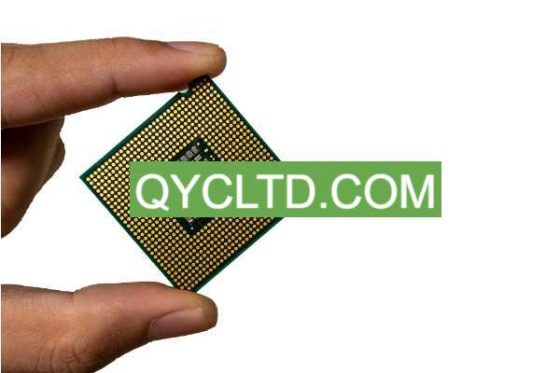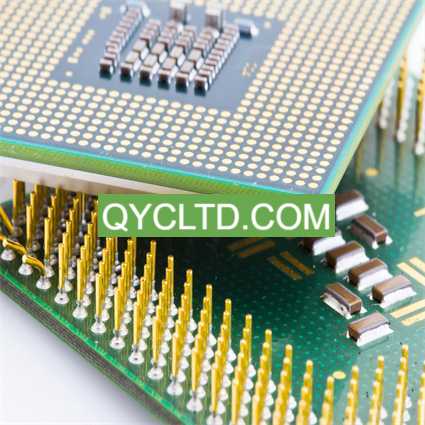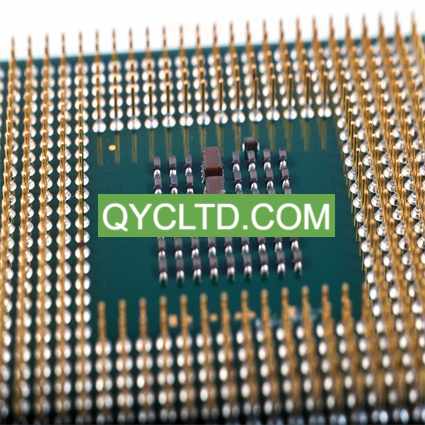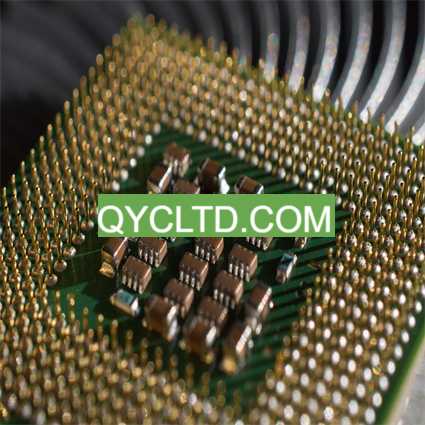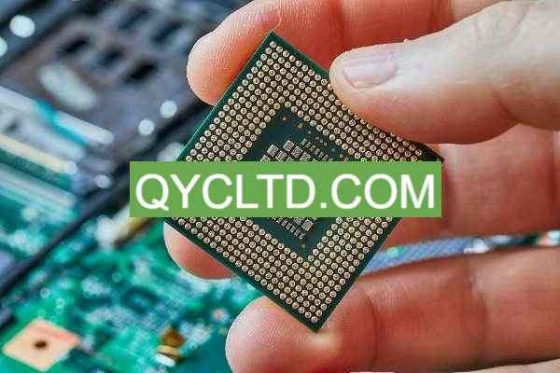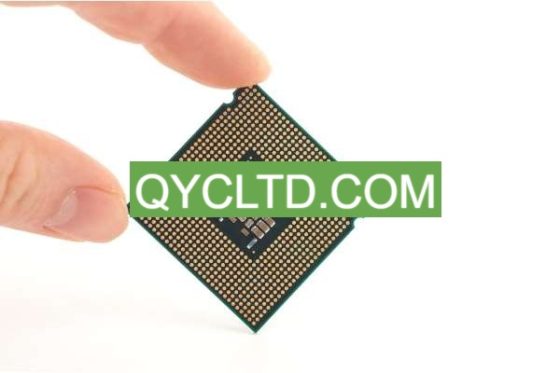What is CPU Package Substrate?
CPU Package Substrate Manufacturer.A CPU Package Substrate Manufacturer specializes in producing the essential materials that form the base layer for central processing unit (CPU) packages. These substrates provide crucial electrical connections between the CPU and the motherboard, ensuring optimal performance and reliability. The manufacturer employs advanced technologies and precision engineering to create substrates that meet the stringent requirements of modern CPUs, supporting various applications from consumer electronics to high-performance computing systems. Their expertise in materials science and manufacturing processes makes them a critical player in the semiconductor industry.
CPU パッケージ基板 is one of the key components of the processor (CPU) in the computer. It is located between the processor chip (Die) and the motherboard, and plays a role in support, connection and heat dissipation. The processor chip is mounted on the packaging substrate by welding or other methods to form a complete processor module. The design and material selection of the packaging substrate have a significant impact on the performance and stability of the processor.
The packaging substrate typically consists of a multilayer printed circuit board (プリント基板) with complex wiring and metal layers to support communication and power transfer between the processor and the motherboard. They also include various connectors and interfaces, such as pins, slots, and pins, so that the processor can communicate with other components on the motherboard, such as memory, graphics cards, and storage devices. These connectors and interfaces not only need to provide high-speed data transfer, but also ensure reliable power supply and heat dissipation to maintain processor stability and performance.
さらに, the packaging substrate also assumes the function of heat dissipation. They typically include heat sink mounting points and thermally conductive materials to efficiently transfer the heat generated by the processor to the heat sink and dissipate it through an air or liquid cooling system. This is critical to keeping the processor within a safe operating temperature range to prevent overheating damage and reduced performance.
まとめると, the CPU Package Substrate is an important part of the processor. It not only provides connection and support functions, but also plays a key role in power transmission and heat dissipation, directly affecting the performance and stability of the processor.
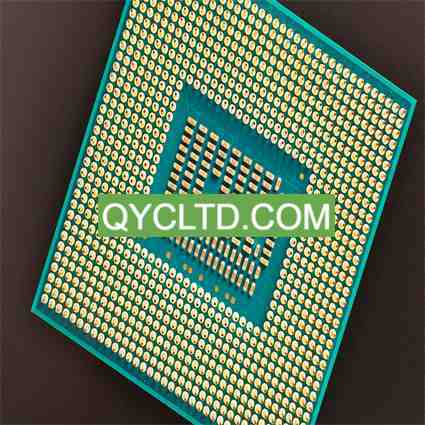
CPUパッケージ基板メーカー
CPU Package Substrate design Reference Guide.
CPUパッケージ基板 (CPU chip packaging substrate) is a key component used to connect the CPU chip and the motherboard. It carries the CPU chip and its peripheral components, and provides power, signal and heat transfer. This substrate design needs to follow the CPU Package Substrate Design Reference Guide to ensure its performance and reliability.
CPU Package Substrate is usually made of high-performance materials, such as silicon-based materials, fiberglass and resin. These materials have excellent thermal conductivity and mechanical strength to meet the requirements of high-speed operation of the CPU.
The size of the CPU Package Substrate depends on the package size of the CPU chip and the specifications of the motherboard. It usually has precise dimensions and routing to ensure proper connections to the CPU chip and motherboard.
The manufacturing process of CPU Package Substrate includes multiple steps, such as substrate preparation, printing, electroplating, packaging and testing. These steps require highly sophisticated equipment and technology to ensure substrate quality and performance.
CPU Package Substrate is widely used in various electronic products such as computers, servers, and mobile devices. It plays the role of a bridge between the CPU and the motherboard in these devices and is a key component for the normal operation of the entire system.
CPU Package Substrate has many advantages, including high performance, high reliability, good heat dissipation performance and compact size. These advantages make it an indispensable component in modern electronic equipment.
When using CPU Package Substrate, users may encounter some common problems, such as poor connections, failures, 等. For these problems, you can refer to the Frequently Asked Questions (FQA) for troubleshooting and resolution.
要は, the CPU Package Substrate is a key component connecting the CPU chip and the motherboard. Its design, 材料の選択, manufacturing process, 等. are all crucial and directly affect the performance and stability of the entire system.
What material is used in CPU Package Substrate?
CPU packaging substrates often use a variety of materials to achieve their functionality and performance requirements. Among them, a common material is FR-4 (fiberglass reinforced epoxy resin), which is a substrate material widely used in electronic devices and has good mechanical strength and electrical properties. FR-4 substrate is usually used as the bottom layer of CPU packaging substrate to provide stable structural support and good insulation performance.
In addition to FR-4, some high-performance CPU packaging substrates may also use other materials, such as organic polymers, ceramic substrates, metal substrates, 等. Organic polymer materials generally have lower cost and lighter weight and are suitable for CPU packaging with general performance requirements. Ceramic substrates have better heat dissipation performance and high-frequency electrical performance, and are suitable for high-performance CPU packaging, but the cost is correspondingly higher. Metal substrates are mainly used for special applications, such as when better thermal conductivity and mechanical strength are required.
Taking into account cost, performance and application requirements, manufacturers will select appropriate substrate materials based on the specific requirements of the CPU packaging. 設計および製造プロセス中, factors such as the thickness, number of layers, thermal conductivity, and electrical performance of the substrate will also be considered to ensure that the CPU packaging substrate can meet the stable operation and performance requirements of the CPU.
What size are CPU Package Substrate?
The size of CPU package substrates varies depending on the manufacturer and model, but they typically range from a few square millimeters to several square centimeters. Generally, CPU package substrates may have dimensions ranging from 20 millimeters × 20 millimeters to 50 millimeters × 50 millimeters. These dimensions depend on factors such as the integrated circuit design, manufacturing process, and functional requirements of the CPU chip. かつ, different CPU models may have different package forms, such as LGA (Land Grid Array), PGA (Pin Grid Array), or BGA (Ball Grid Array), each with its own size and shape. The dimensions of CPU package substrates are usually detailed by the manufacturer in product specification sheets, to facilitate consideration of their physical layout and connection requirements when designing circuit boards.
The Manufacturing Process of CPU Package Substrate
The manufacturing process of LCC packaging substrates is a complex process, including multiple steps such as raw material preparation, mold forming, printed circuits, sintering, metallization and testing. Below is a detailed description of these steps:
The first step in manufacturing LCC packaging substrates is to prepare raw materials. This may include substrate materials, such as fiberglass-reinforced epoxy, and metal foils for printed circuits.
次に, the raw materials will be used to form molds for manufacturing LCC packaging substrates. このステップの内容, the substrate material is placed into the mold and shaped under high temperature and pressure to obtain the desired shape and size.
Once the substrate is formed, next comes the step of printing the circuit. This is usually accomplished by stacking metal foils and substrates layer by layer, using photolithography techniques to imprint circuit patterns onto the surface of the substrate.
After the printed circuit is completed, sintering is required to solidify the connection between the metal foil and the substrate. This is usually done through high temperature treatment to ensure good stability and reliability of the circuit during use.
Metalization is the process of connecting circuits to other components. This may involve soldering wires to the circuit and using a metal covering to protect the circuit from the environment.
最終的に, the final step in the manufacturing process is testing the LCC packaging substrate. This includes a thorough inspection of the circuit’s connectivity, performance and stability to ensure it meets specifications and quality standards.
The entire manufacturing process requires strict quality control and precise operations to ensure that the final product is of high quality and reliability and can meet the needs of different application fields.
The Application area of CPU Package Substrate.
LCC (Leadless Chip Carrier) packaging substrate is an integrated circuit packaging material with good thermal conductivity, dimensional stability and electrical insulation properties. It plays an important role in high-performance integrated circuit packaging and meets the stringent requirements for performance, reliability and stability of modern electronic products. The following are the specific applications of LCC packaging substrates in different application fields:
In computers and servers, packaging requirements for high-performance processors and chips are very strict. The LCC packaging substrate can provide good thermal conductivity, effectively dissipate heat, and ensure the stability and reliability of the chip under high load conditions. 同時に, its dimensional stability ensures the stability of the package under different temperature conditions, helping to improve the performance and life of the device.
In communication equipment, LCC packaging substrates are widely used in the packaging of key components such as radio frequency (RF) modules and baseband processors. Its good electrical insulation properties ensure the transmission quality of RF signals, while its excellent thermal conductivity helps reduce the operating temperature of the RF module and improve the performance and stability of the equipment.
In the field of automotive electronics, LCC packaging substrates are used to package key components such as vehicle control units (ECUs), sensors and drivers. Its dimensional stability and electrical insulation properties can adapt to the complex working environment and vibration conditions of automobiles, ensuring the reliability and durability of electronic equipment.
In industrial control and automation systems, LCC packaging substrates are widely used in the packaging of PLC (programmable logic controller), sensors, actuators and other equipment. Its good thermal conductivity and dimensional stability can ensure the stability and reliability of equipment in harsh working environments, improving industrial production efficiency and automation levels.
In consumer electronics products, such as smartphones, 錠剤, cameras, 等。, LCC packaging substrates are widely used in the packaging of key components such as high-performance processors and image sensors. Its dimensional stability and excellent electrical insulation properties help improve the performance and stability of equipment and meet consumers’ high requirements for product performance and experience.
原則として, LCC packaging substrates have broad application prospects in the field of high-performance integrated circuit packaging due to their excellent thermal conductivity, dimensional stability and electrical insulation properties, and can meet the performance, reliability and stability requirements of electronic products in different fields. needs.
What are the advantages of CPU Package Substrate?
CPU packaging substrates (also known as LCC packaging substrates) offer several advantages to meet the needs of high-performance integrated circuit packaging. Its main advantages are as follows:
Good thermal conductivity: The CPU packaging substrate has excellent thermal conductivity and can effectively conduct the heat generated by the CPU to heat dissipation devices such as radiators or cooling fans to keep the CPU within a suitable operating temperature range. This helps improve the performance and stability of the CPU, extending its lifespan.
Dimensional stability: LCC packaging substrate has good dimensional stability and can maintain the geometry and size of the packaging structure unchanged, thereby ensuring a stable connection between the CPU and other components. This stability helps reduce deformation and damage of the packaging structure during use, improving the reliability and durability of the device.
Good electrical insulation performance: The CPU packaging substrate has good electrical insulation performance, which can effectively block electrical signal interference and short circuits between electronic components, ensuring the normal operation between the CPU and other devices. This electrical insulation property is critical to ensuring stable operation and data transmission of integrated circuits.
Meet the packaging needs of high-performance integrated circuits: Generally speaking, CPU packaging substrates have key characteristics that meet the packaging needs of high-performance integrated circuits, including good heat dissipation performance, dimensional stability and electrical insulation properties. This makes it ideal for meeting the integrated circuit packaging requirements in areas such as modern high-performance computing and communications equipment.
まとめると, the CPU packaging substrate provides reliable support for high-performance integrated circuit packaging and promotes the development and application of modern technological equipment with its advantages such as good thermal conductivity, dimensional stability and electrical insulation properties.
FAQ
What is a CPU Package Substrate?
A CPU Package Substrate refers to the underlying layer or material upon which the central processing unit (CPU) is mounted within a semiconductor package. It serves as a foundational component that facilitates the electrical connections between the CPU and the rest of the system.
What is the role of the CPU Package Substrate?
The primary role of the CPU Package Substrate is to provide mechanical support and electrical connectivity for the CPU. It acts as a medium through which signals, power, and data can be transmitted between the CPU and other components of the computer system, such as the motherboard.
What materials are commonly used in CPU Package Substrates?
Common materials used in CPU Package Substrates include various types of ceramics, such as alumina (Al2O3) or aluminum nitride (AlN), as well as organic substrates like fiberglass-reinforced epoxy (FR-4). The choice of material depends on factors such as cost, performance requirements, and manufacturing processes.
How does the design of the CPU Package Substrate impact performance?
The design of the CPU Package Substrate can influence several aspects of performance, including electrical signal integrity, thermal management, and overall reliability. Optimal design considerations involve factors such as signal routing, power delivery, and thermal dissipation to ensure efficient operation of the CPU.
What are the different types of CPU Package Substrate designs?
CPU Package Substrate designs can vary based on factors such as the number of layers (single-layer, multi-layer), substrate material, and interconnection technologies (such as wire bonding or flip-chip). Each design has its advantages and trade-offs in terms of electrical performance, cost, and manufacturability.
 半導体パッケージ基板メーカー
半導体パッケージ基板メーカー

